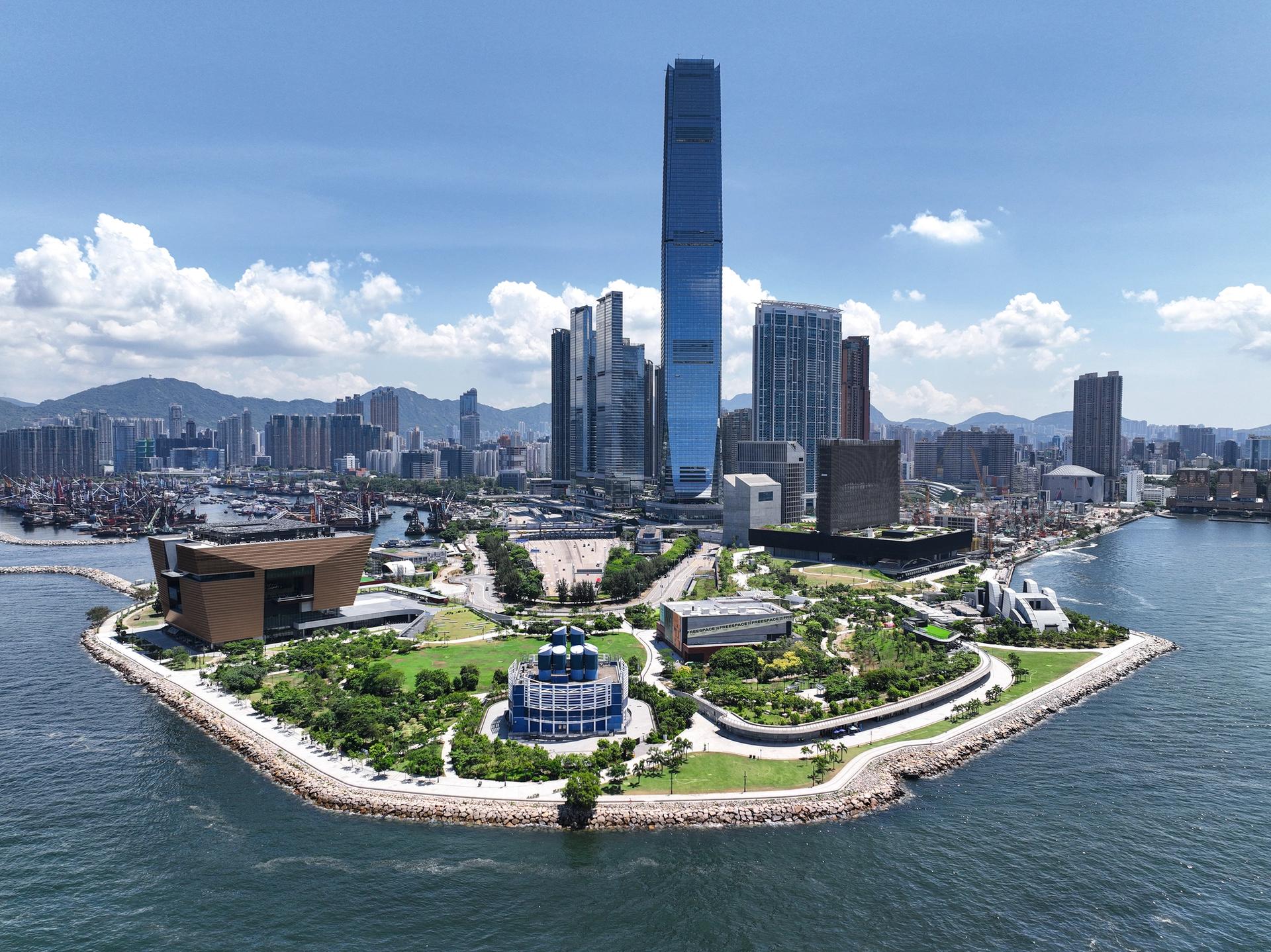Hong Kong’s art season kicks off this week with the city’s first international cultural summit, bringing together influential figures from art, architecture, life sciences, gaming and technology. Organized by the West Kowloon Cultural District Authority (WKCDA) on March 24-26, a series of panel discussions are taking place at three venues: M+, Hong Kong Palace Museum (HKPM) and Xiqu Center.
The summit – aimed at cementing Hong Kong’s reputation as an art hub for East and West – also shone a spotlight on M+, which opened in 2021 when the city was essentially shut off from the world during the Covid-19 pandemic. “We have invested so much to build deep and serious infrastructure in Hong Kong. This year, I thought it was time to celebrate this with international guests,” says Museum Director Suhanya Raffel.
With the theme “Connecting Cultures, Bridging Times”, the Hong Kong International Cultural Summit 2024 brings together more than 1,000 participants from around the world, including heads of important cultural institutions such as the Victoria and Albert Museum, the Center Pompidou and the Tokyo National Museum. Speakers delve into topics such as artificial intelligence, the role of art spaces in community building, and the future of global cultural institutions. Here, Raffel talks about the summit and offers a preview of M+’s upcoming international projects.
What prompted WKCDA to organize the Hong Kong International Cultural Summit?
Suhanya Raffel: One of the unique features of the West Kowloon Cultural District is that we have many colleagues working together across disciplines. We wanted to announce what such a cultural district does for the city, the region and the world. After so much work on the infrastructure, we are now up and running, so it was time to celebrate and hold a summit to invite colleagues from different museums and professions to talk about culture and placemaking.

West Kowloon Cultural District Image: Courtesy of West Kowloon Cultural District
What sets this peak apart from others?
It celebrates how culture adds to a city in the most profound way. We live in complex times and complex regions with relationships that need to be explored, and cultural institutions do this in the most generous way. We remember who we are through culture. The summit is also an invitation to think about where we are going, and how we are working with artists and makers in our future.
The topic of technology and its ever-increasing impact is appearing on several panels, including the “Digital Decentering” that you are moderating. What are some key issues for museums to consider?
Technology comes out of human culture, but we also need to digest and think intelligently about its use, because it can have disastrous consequences if we don’t take advantage of it forever. The “Decentring Digital” panel was thinking about the museum’s role in all this. Technology makes the world our oyster, but it can also be very confusing. How do we think about it then? How do we invite the audience to come and use and explore the technology? We have to unpack that and give thoughtful answers.
We also have another panel called “Promise of Digital”. At these events we invited two very creative voices to explore what technology means to them: Refik Anadol, a Turkish artist living in the US who works in extraordinary and experimental ways, and Ma Yansong, an architect from Beijing. There are also speakers like María Wills Londoño from Bogotá, Colombia, where technology is not as readily available. We wanted to explore how biological intelligence differs from artificial intelligence.
Why was it important to include voices from outside the art world for the summit?
Today’s museums work in a different way than 50 or 20 years ago. They have become important civic organizations and play a variety of roles in communities. Therefore, bringing in experts from fields outside museum practice is as important as inviting museum voices. For example, Maholo Uchida, who was among the first to work with robotics in Japan, and Professor Michael John Gorman, who has a strong interest in science, nature and art. It’s fascinating to be able to bring different voices together. The museum then becomes a platform for knowledge construction and research. Historically, this has always been one of our core business principles, but now in our 21st century. We are analyzing it according to the reality of the century.
Why are such events essential in Asia?
In Asia, we are seeing the building of many organizations, so it is important to hold regular conferences where we meet. Having summits helps us discover how culture is leveraged and how these organizations work in our communities.
M+, the Hong Kong Palace Museum and WKCD’s performing arts division signed cooperation agreements with more than 20 arts and cultural organizations at the summit. Can you share about future M+ collaborations?
The collaborations will be extensive. We signed a memorandum of understanding with Qatar Museums to bring a wonderful exhibition on the architect IM Pei to Doha. We are also working with colleagues in Singapore and Thailand to establish a major Asian avant-garde film circulation library. We are able to do this because of our partnership with Chanel. The library aims to build a repository of great experimental practices that have come out of cinema in this very rich but little-known region. As an organization of audiovisual culture, where the moving image is one of our main pillars, we want to do a lot of work for the creative voices of this part of the world.


